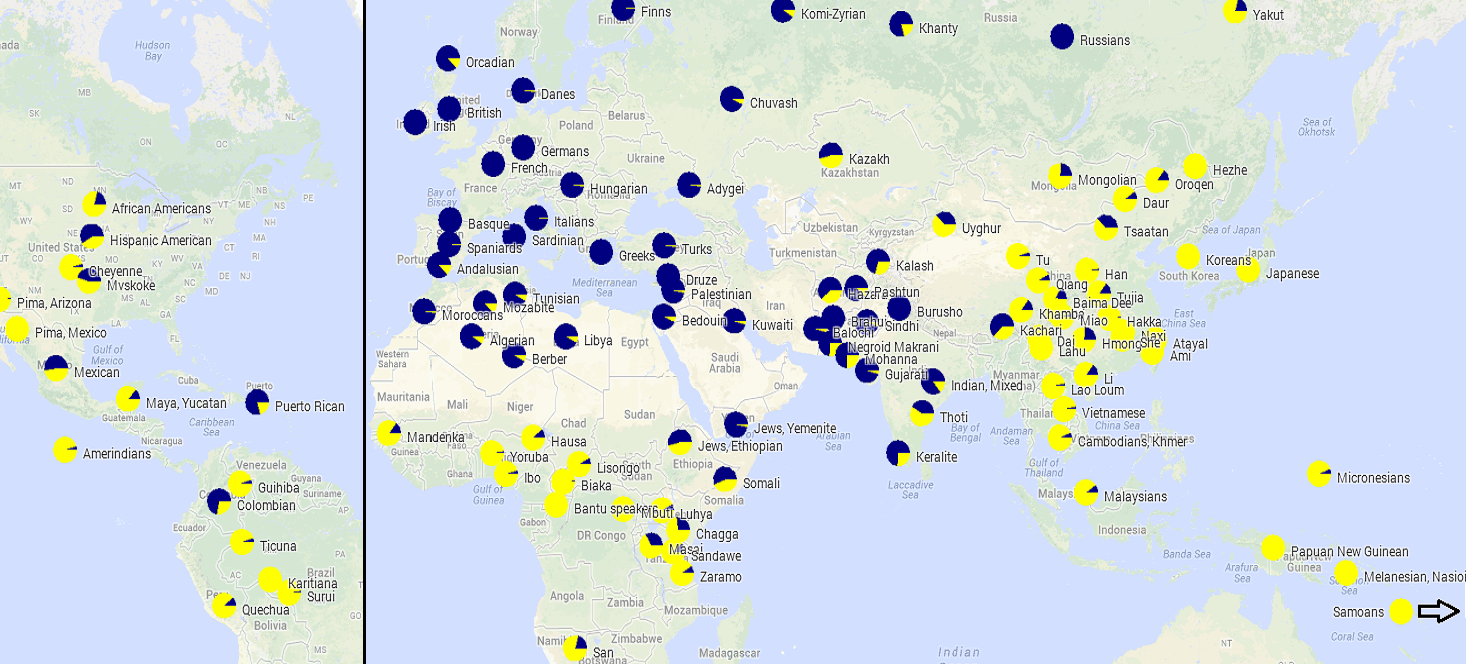Angela
Elite member
- Messages
- 21,823
- Reaction score
- 12,329
- Points
- 113
- Ethnic group
- Italian
According to the ALlele FREquency Database, the Hausa have 10.5% of A111T mutations, which is the highest for Central Africa. The Fulani and Kirdi are not tested. The Mandenka of West Africa (around Gambia and Senegal) have 15% and have about 5% of E-M81.
They even have a map too.

This data also shows that the Kuwaiti and Levantine Bedouins possess respectively 96% and 93% of this light skin allele.
I suppose everything is in the eye of the beholder. Looking at this map, the most striking thing to me is that while the epicenter seems to be the Middle East, the spread is to the southeast, down into India, west along the coast of north Africa, and then north and north east
Usually, I think you're supposed to look for the most parsimonious explanation, and that seems to me to be the fact that this is tracking the movement of agriculture, or perhaps specifically animal husbandry? I would think multiple yDNA and mtDNA lineages would have been involved in its spread. I doubt that scientists would be able to track the actual occurrence to one specific group with one specific y lineage, but it's possible I suppose. Subsequent migrations would affect the results as well. For example, it's interesting that Orcadians show a bit of yellow...perhaps that's a Siberian segment from the east? There's one in southern Spain as well...perhaps the Moorish invasions? You would think in that case the Sicilians would show a slice of yellow, but perhaps they weren't tested.
The allele, once present in an expanding population such as one that has adapted agriculture could spread very quickly. We only have to look at G2a Oetzi in 3300 BC who was already homozygous for it, as Nobody 1 mentioned up thread.
One thing that I don't think it means, however, is that even being homozygous for it means that people would have been fair in the way that people in this thread seem to be imagining. I believe that Razib Khan mentioned in one of his posts on this subject that he is homozygous for it as well.
Then, the mere presence of these alleles doesn't mean that they were always expressed in the same way. Gene expression is a very complicated and not very well understood phenomenon. So, just as selection or deselection for the alleles could occur based on a combination of climate and perhaps diet, these things could also affect the expression of the alleles in certain conditions. Someone living in cloudy Britain could express the alleles differently than someone baking by the sea in Crete.
Then, there's the other more European specific allele for skin pigmentation, 374f.
That has also been studied: You can find the list of values for European cities in this Lucotte et al paper. Unlike the prior snp, it has not quite reached fixation in Europe, which to me indicates it may be younger than the prior snp. To me, it looks like a more straight north south cline, with the Scandinavian countries having the highest values, although France presents a more complicated picture.
Does anyone remember if this is the snp for which Oetzi was heterozygous? Anyway, here's the paper:
http://www.academicjournals.org/article/article1379514057_Lucotte and Yuasa pdf.pdf

